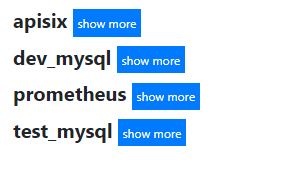First, create a new user in the database:
CREATE USER 'exporter'@'%' IDENTIFIED BY 'promethues' WITH MAX_USER_CONNECTIONS 3;
GRANT PROCESS, REPLICATION CLIENT, SELECT ON *.* TO 'exporter'@'%';
flush privileges;
exporter is the username, and promethues is the password.
Define the database connection configuration file (my.cnf):
[client]
host=127.0.0.1
port=3306
user=exporter
password=promethues
Open https://github.com/prometheus/mysqld_exporter/releases to download the plugin.
Run the command:
./mysqld_exporter --config.my-cnf=/data/exporter/my.cnf
Docker deployment:
docker network create my-mysql-network
docker pull prom/mysqld-exporter
docker run -itd \
--restart=always \
-p 9104:9104 \
--network my-mysql-network \
-v /data/exporter/my.cnf:/opt/my.cnf \
prom/mysqld-exporter \
--config.my-cnf=/opt/my.cnf
Next, modify the prometheus.yml file to monitor mysqld-exporter by adding the following configuration:
- job_name: "dev_mysql"
scrape_interval: 5s
metrics_path: "/metrics"
static_configs:
- targets: ["192.168.80.81:9104"]
Restart Prometheus.

Next, download the mysqld_exporter monitoring dashboard by opening https://github.com/prometheus/mysqld_exporter/tree/main/mysqld-mixin.
Download the appropriate template, for example, dashboards/mysql-overview.json. Then import it into Grafana.

文章评论